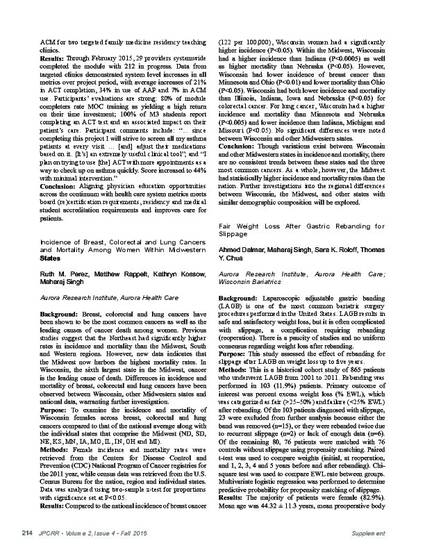
- weight loss,
- gastric banding,
- bariatric surgery
Background: Laparoscopic adjustable gastric banding (LAGB) is one of the most common bariatric surgery procedures performed in the United States. LAGB results in safe and satisfactory weight loss, but it is often complicated with slippage, a complication requiring rebanding (reoperation). There is a paucity of studies and no uniform consensus regarding weight loss after rebanding.
Purpose: This study assessed the effect of rebanding for slippage after LAGB on weight loss up to five years.
Methods: This is a historical cohort study of 865 patients who underwent LAGB from 2001 to 2011. Rebanding was performed in 103 (11.9%) patients. Primary outcome of interest was percent excess weight loss (% EWL), which was categorized as fair (> 25–50%) and failure (< 25% EWL) after rebanding. Of the 103 patients diagnosed with slippage, 23 were excluded from further analysis because either the band was removed (n = 15), or they were rebanded twice due to recurrent slippage (n = 2) or lack of enough data (n = 6). Of the remaining 80, 76 patients were matched with 76 controls without slippage using propensity matching. Paired t-test was used to compare weights (initial, at reoperation, and 1, 2, 3, 4 and 5 years before and after rebanding). Chi-square test was used to compare EWL rate between groups. Multivariate logistic regression was performed to determine predictive probability for propensity matching of slippage.
Results: The majority of patients were female (82.9%). Mean age was 44.32 ± 11.3 years, mean preoperative body mass index 48.62 ± 8.0 kg/m2 and mean preoperative excess weight 171.28 ± 52.0 lbs. Median follow-up after LAGB was 63.63 months (range 0.0–162.4) for a total of 4,859 patient-years. During follow-up, 103 patients (11.9%) underwent reoperation for slippage at a median of 54.26 months (range 0.0–160.50) after LAGB. We found a significantly lower weight at rebanding, and at 1, 2, 3, 4 and 5 years after rebanding in patients with slippage compared to their initial weight, and their weight at 1, 2, 3, 4 and 5 years after LAGB. There was a significantly lower excess weight loss failure rate in patients with slippage compared to matching controls (40% vs. 60%, P = 0.0006) after first year. There were no differences in EWL rate between the two groups after first year. In multivariate analysis only female gender was significantly associated with slippage.
Conclusion: Failure rate of excess weight loss after rebanding for slippage was lower or similar to the failure rate after initial laparoscopic adjustable gastric banding.
Available at: http://works.bepress.com/maharaj-singh/53/
